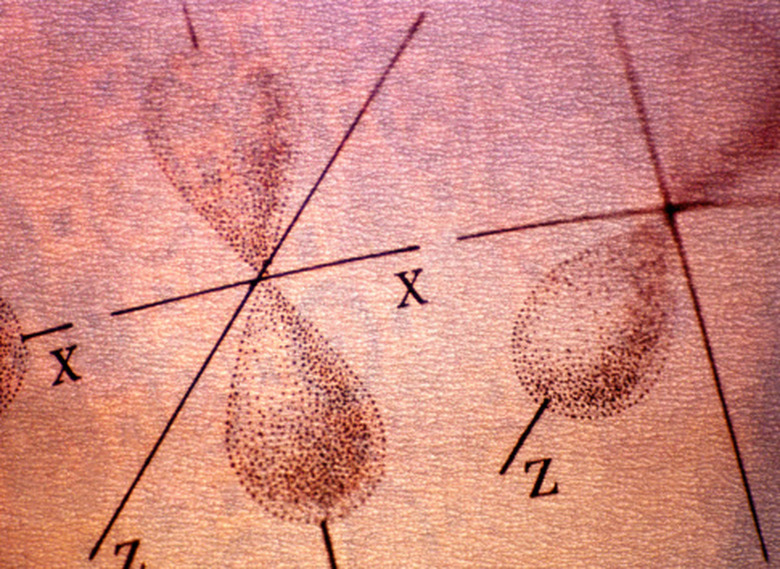How To Make A Cobalt Atom Model
Cobalt is magnetic metal with an atomic weight of 58.933200 amu. It is located in group 9, period 4 of the Periodic Table of Elements. Each atom has 27 protons, 32 neutrons, and 27 electrons. Cobalt is often used in making alloys and magnets.
Step 1
Glue the larger beads or balls together in a clump. They may also be attached to a larger Styrofoam ball. Make sure you have the correct number of protons and neutrons. There should be 27 balls representing protons, and 32 representing neutrons.
Step 2
Take the shortest wire and slip two of the small beads on to it. Make sure electrons are of equal distance apart and glue them in place by squirting a small amount of glue inside the bead and holding it in place while it dries. Connect and secure the ends of the wire with tape or glue.
Step 3
String the second shortest wire and slide eight of the small beads on it. Make sure they are of equal length apart, then glue them in place. Connect and secure the ends of the wire with tape or glue.
Step 4
String the second longest wire with 15 of the small beads. Make sure they are of equal length apart, then glue them in place. Connect and secure the ends of the wire with tape or glue.
Step 5
String the longest wire with two electrons. Make sure they are of equal length apart, then glue them in place. Connect and secure the ends of the wire with tape or glue.
Step 6
Place the circular wires around the nucleus from smallest to largest. Take the string and tie it from the smallest circle to the to one next to it, leaving enough space that the electron beads do not touch. Then, tie the second ring to the third, and the third to the fourth.
Step 7
Secure the inner electron ring to the nucleus with the string. Either tie the string around the ball or glue it to the top.
Things Needed
- 27 red craft beads or balls, solid
- 32 white craft beads or balls, solid
- 27 small blue craft beads or balls
- 4 different lengths of plastic or metal wire
- String
- Glue
- Tape
TL;DR (Too Long; Didn't Read)
Anything round can be used for the particles. Plastic tubing can also be used for the orbitals
If you don't need to show the number of protons and neutrons, just using a single large ball can work for the nucleus.
To hide the taped section of the wire, tape the wire closed before you glue the last bead in place. Then you can glue that bead over the seam to mask it.
Depending on how large your beads or balls are will depend on how long the wire must be. Before you start bend the wire into circles to check on their sizes. Then, you can then cut them to properly fit your atom.
Warning
is sharp and the ends can cut. Use care when working with wire.
Cite This Article
MLA
Howard, Sawyer. "How To Make A Cobalt Atom Model" sciencing.com, https://www.sciencing.com/make-cobalt-atom-model-8487723/. 24 April 2017.
APA
Howard, Sawyer. (2017, April 24). How To Make A Cobalt Atom Model. sciencing.com. Retrieved from https://www.sciencing.com/make-cobalt-atom-model-8487723/
Chicago
Howard, Sawyer. How To Make A Cobalt Atom Model last modified March 24, 2022. https://www.sciencing.com/make-cobalt-atom-model-8487723/
